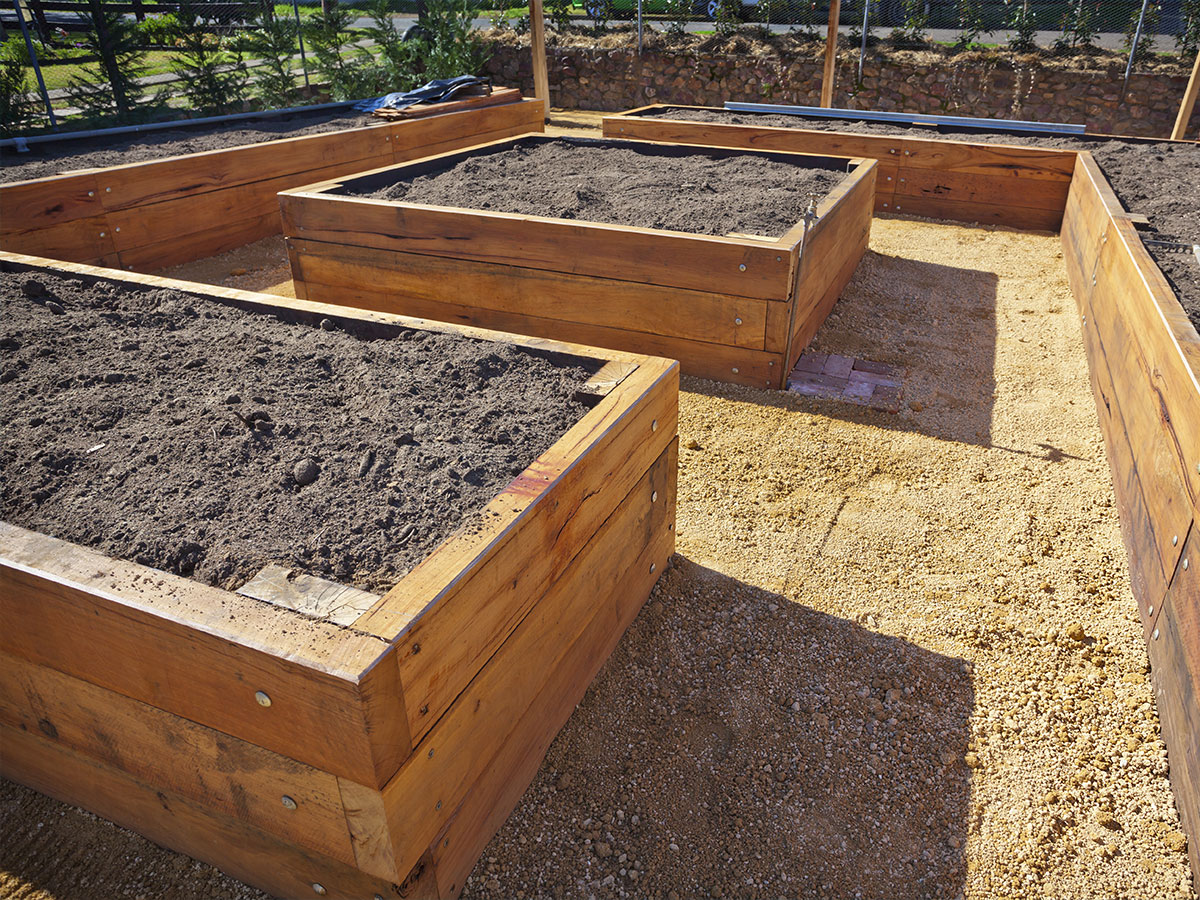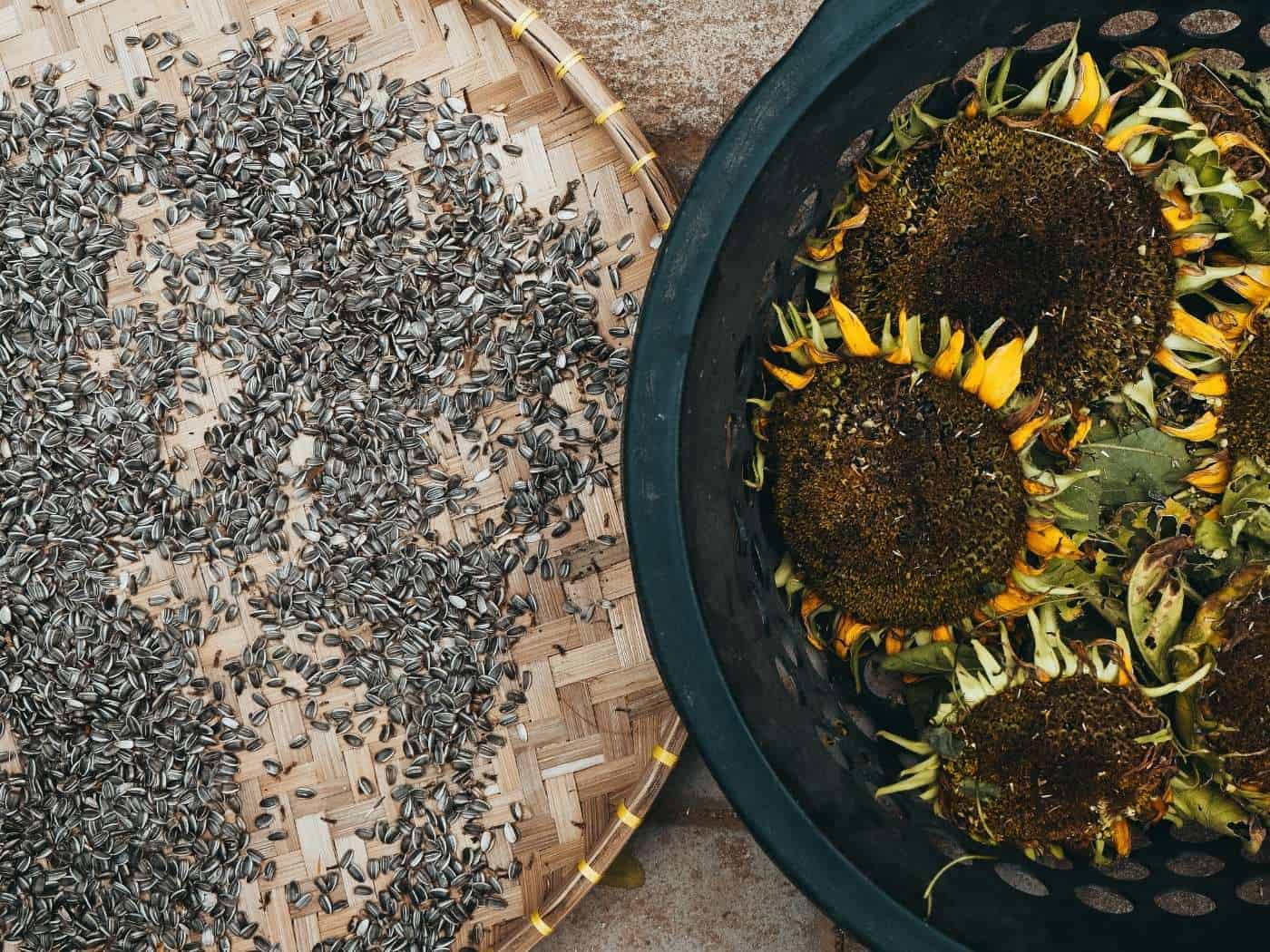Starting Your Sunflower Journey: Choosing the Right Seeds
Embarking on the journey of how to grow sunflower seeds begins with selecting the appropriate variety. Sunflowers present a diverse range, from the diminutive dwarf types, perfect for small gardens or containers, to the towering giants that can reach impressive heights. Ornamental sunflowers offer unique colors and petal shapes, while others are cultivated specifically for their edible seeds. The desired outcome dictates the ideal seed selection. Consider the available space and the purpose of growing sunflowers. Dwarf varieties, like ‘Sunspot’ or ‘Teddy Bear,’ are excellent for beginners due to their manageable size and shorter growing season. These varieties are ideal for compact spaces. Giant varieties such as ‘Mammoth’ or ‘Russian Giant’ command attention with their towering stature and large seed heads, which is suited to larger gardens. Ornamental types like ‘Autumn Beauty’ boast a variety of colors, making them a popular choice for adding visual interest. Edible varieties, such as ‘Black Oil,’ are cultivated specifically for their seeds, which are flavorful and nutritious.
Choosing the right sunflower seeds is crucial for successful growth. Beginners often find it easier to start with dwarf or smaller varieties. These require less space and are less prone to wind damage. Understanding your local climate is also vital when learning how to grow sunflower seeds. Short-season varieties are more suitable for areas with shorter summers. When selecting seeds, check for labels that indicate disease resistance. This ensures healthier plants. It is helpful to select seeds from reputable sources. This will guarantee higher germination rates. Popular choices for novices include ‘Lemon Queen’ with its soft yellow hue and ‘Moulin Rouge’ with its deep red petals. These are known for their ease of cultivation and visual appeal. The variety ‘Pike’s Peak’ is another excellent option. Its large size and bright yellow petals makes it a classic sunflower choice. Prioritize your goals. Do you want edible seeds or stunning blooms? Or do you want a smaller size or a giant one? Make your decision based on this.
Before deciding, investigate the specific characteristics of each variety. This includes their mature height, flower color, seed production, and disease resistance. Some sunflowers are specifically bred for cut flowers, while others excel in seed production. The careful selection of the right type is a very important aspect of how to grow sunflower seeds successfully. Consider the location where you plan to plant. This will help you choose a variety that is suitable for the available space. By doing so, you will be sure to select seeds that will be the most successful. Also, if you are a beginner, start small and learn the techniques. This will allow you to move into the larger and more complex types.
How to Prepare Your Garden for Sunflower Planting
Selecting the ideal location is crucial when planning how to grow sunflower seeds successfully. Sunflowers thrive in full sunlight, requiring at least six to eight hours of direct sun daily. This ensures strong stem growth and vibrant blooms. The chosen site must also have well-draining soil. Poor drainage can lead to root rot and other fungal diseases. Additionally, consider protection from strong winds. Sunflowers, especially taller varieties, can be vulnerable to being knocked over. A location sheltered by a fence or building can offer the necessary support. Preparing the soil correctly is equally vital for healthy sunflower growth. Begin by amending the soil with compost or other organic matter. This will enrich the soil and improve its overall structure. Adding organic matter improves drainage in heavy clay soils and water retention in sandy soils. The ideal soil pH for sunflowers is slightly acidic to neutral, ranging from 6.0 to 7.5. This optimal range promotes the best nutrient uptake. Testing the soil pH before planting can help ensure you achieve the best results when learning how to grow sunflower seeds.
Proper soil preparation is essential for planting. Remove any weeds or debris from the area. Loosen the soil to a depth of at least 12 inches using a garden fork or tiller. This creates an ideal environment for sunflower roots to establish. Incorporate the compost or organic matter evenly. This will provide a steady release of nutrients as the seedlings grow. If you have heavy clay soil, consider adding sand to further improve drainage. A well-prepared site allows sunflowers to access the water and nutrients they need easily. This promotes stronger, more resilient plants. Remember that the initial soil preparation plays a significant role in the long-term success of how to grow sunflower seeds. A few additional steps, such as amending the soil with a slow-release fertilizer can be very beneficial. This step supports growth throughout the season, and helps achieve those stunning results. It will also provide the necessary nutrients for optimal plant development.
Attention to these details will greatly enhance your sunflower garden. With the right site and soil conditions, you will be well on your way to healthy, vibrant sunflowers. These steps form a solid foundation for the rest of the growing process. Proper preparation reduces the risk of plant diseases. It also minimizes the challenges associated with growing these magnificent flowers. By focusing on proper site selection and soil preparation, anyone can learn how to grow sunflower seeds effectively and enjoy these beautiful flowers.
The Art of Sowing: Planting Your Sunflower Seeds
Planting sunflower seeds correctly is key to successful growth. Understanding the right depth and spacing is important. Direct sowing is a common method. This involves planting seeds directly into the garden soil. The recommended depth for planting is about 1 inch. Space seeds 6 to 12 inches apart for smaller varieties. Larger varieties need 18 to 36 inches of space. Starting seeds indoors is another option. Use small pots or trays. Plant the seeds at the same depth as direct sowing. Keep the soil moist and warm. Transplant seedlings after the last frost. Wait until they have developed a few sets of true leaves. Knowing the best time to plant is critical. This varies by climate. Plant after the last frost in spring. Ensure the soil is warm. The soil temperature should be around 60°F (15°C). A soil thermometer can help you with this. Consider your local climate and first frost dates when determining how to grow sunflower seeds.
Protecting seeds from pests is essential. Birds can be a common problem. They often dig up newly planted seeds. Use netting or floating row covers to protect them. Place these over the planting area. This creates a physical barrier. This prevents birds from accessing the seeds. Other pests, such as rodents, can also be an issue. Consider using deterrents. These could include natural repellents or physical barriers. Monitor the area regularly for signs of pests. Address any issues promptly. The soil should be well-draining. Amend the soil with compost if it is heavy clay. This improves soil texture and provides nutrients. Plant sunflower seeds in a location that gets full sun. Sunflowers need 6-8 hours of sunlight daily. This is vital for optimal growth. These practices will significantly improve the chances of success when planting sunflower seeds.
Proper planning before sowing will benefit your sunflowers. Select a site with well-draining soil. Provide plenty of sunlight. Protect them from strong winds. Follow the depth and spacing guidelines. This will ensure that they have the necessary space to grow. Implement protection methods. Prevent birds and other pests. By doing this, you are creating ideal conditions for strong, healthy sunflower plants. Learning how to grow sunflower seeds requires careful preparation and attention to details. This will result in beautiful, vibrant sunflowers.
Nurturing Growth: Watering and Feeding Your Sunflowers
Consistent watering is crucial for the healthy development of sunflowers, particularly during the early stages of germination and growth. Understanding how to grow sunflower seeds involves recognizing the plant’s water needs, especially when they are young. Adequate moisture is vital for the roots to establish themselves and for the plant to reach its full potential. During this period, regular and deep watering is more beneficial than frequent light watering. This allows the water to penetrate down, encouraging deep root growth. Be aware of the signs of both overwatering and underwatering. Overwatered sunflowers may show wilting, yellowing leaves, and even root rot. On the other hand, underwatered plants often appear wilted, with the leaves feeling dry and brittle. Monitor the soil moisture by checking the top few inches, and water when it feels dry to the touch.
Fertilizing sunflowers can greatly enhance their growth and bloom production. Understanding how to grow sunflower seeds well includes providing the right nutrients for them. Fertilizers provide essential elements that support healthy plant development. For organic options, compost and well-rotted manure are excellent choices. These provide nutrients slowly, improving the soil structure at the same time. Synthetic fertilizers, typically higher in nutrients, should be used with caution. It is vital to adhere to the instructions to avoid over-fertilization. A balanced fertilizer, such as 10-10-10 (nitrogen, phosphorus, and potassium), can be beneficial. However, a formula that is higher in phosphorus might support better blooming. Apply fertilizer when the plants are actively growing, usually a few weeks after they emerge. A second application can be considered when the flower buds appear, to help with flowering. Ensure to distribute fertilizer evenly around the base of each sunflower, avoiding direct contact with the stem and following the recommended application rate for your chosen product.
Knowing how to grow sunflower seeds properly also means understanding how to provide the correct nutrition. The right combination of water and fertilizer will lead to strong, healthy plants. Regular soil moisture and thoughtful fertilization are key aspects of sunflower care. Keep a close eye on your sunflowers. Observing them closely will help to identify any needs or potential issues early. Adjust your watering and feeding routines, as needed, according to their growth. This approach will give your sunflowers the best chance to thrive and produce their vibrant blooms.
Supporting the Stems: Protecting Your Growing Sunflowers
As sunflowers reach impressive heights, they become vulnerable to wind damage. Staking is a reliable method to support their growth. For individual plants, use sturdy stakes made of bamboo or wood. Gently tie the sunflower stem to the stake using soft twine or plant ties. Ensure the ties are not too tight to avoid damaging the stem. For multiple sunflowers, create a support system using a wire or netting stretched between stakes. This acts as a barrier, preventing the plants from leaning excessively during windy conditions. Early intervention is key to successful support, starting the process when the plants are still relatively young, before they become too tall and heavy to manage easily. Knowing how to grow sunflower seeds and implementing proper support is crucial for the health of these beautiful flowers.
Beyond wind protection, vigilance against pests and diseases is essential. Aphids are common culprits, often congregating on the stems and leaves. A simple solution is to spray the affected areas with a mixture of water and mild dish soap. For caterpillars, manually removing them is often the most effective approach, especially in small gardens. Regular inspection can help spot these pests early before infestations become severe. Look for signs of fungal diseases, such as powdery mildew, appearing as a white coating on the leaves. Ensuring proper air circulation around the plants can help prevent fungal issues. Consider using organic pest control options like neem oil or insecticidal soap for a more natural way of dealing with infestations, keeping in mind that when learning how to grow sunflower seeds, it is best to maintain a proactive approach. By employing these preventative measures, you will encourage the vibrant and healthy growth of your sunflowers.
Addressing these concerns helps ensure your sunflowers reach their full potential. By understanding how to grow sunflower seeds, including protecting them from the elements and pests, you will be well on your way to having a vibrant and successful garden. Remember, regular monitoring and a proactive approach are key to preventing these issues from escalating. A little care can go a long way in keeping your sunflowers healthy and beautiful throughout their growing season. Successfully nurturing sunflowers from seed to bloom is a rewarding experience.
Harvesting the Rewards: When and How to Collect Sunflower Seeds
Knowing when and how to harvest sunflower seeds is crucial for a successful yield. The ideal time to harvest is when the back of the sunflower head turns from green to yellow or brown. The petals will have dried up and fallen off. The head will also droop downwards. These signs indicate the seeds are mature and ready for collection. To begin, use pruning shears or a sharp knife to carefully cut the sunflower head from the stalk. Leave about a foot of stem attached. The best time to cut the head is during a dry period, which will reduce the risk of mold during drying. Once cut, you should dry the heads in a well-ventilated area. A garage, shed, or covered porch are suitable spaces. Spread them out on a wire rack or hang them upside down. This ensures air circulation and prevents rotting. Protect the drying heads from pests with a mesh bag. Ensure they are fully dry before removing the seeds.
Once the sunflower heads are completely dry, the seeds can be easily separated. You can use your hands to rub the seeds out. You can also rub two heads together to release the seeds. Another effective method involves rubbing the dried heads over a coarse screen or wire mesh. This allows the seeds to fall through while larger pieces of the head remain. The debris can be removed by winnowing or sifting. How to grow sunflower seeds includes knowing how to properly dry the seeds. Lay out the collected seeds in a single layer on trays to fully dry. Stir them regularly to ensure even drying. This process can take several days. Once thoroughly dry, the seeds need to be stored in an airtight container. Place it in a cool, dark, and dry location. Proper storage prevents the seeds from becoming moldy or losing viability. They can be used for planting next year, or for consumption. How to grow sunflower seeds is a rewarding experience, especially when you can harvest your own seeds to repeat the cycle.
Harvested sunflower seeds are a valuable resource. They are not only a treat for humans but can also be enjoyed by birds and other wildlife. Furthermore, learning how to grow sunflower seeds not only provides an aesthetic addition to your garden, but can also teach about the full life cycle of plants. It is important to correctly dry and store them. This ensures the seeds will last for future use. You can use the collected seeds to make bird feeders or as a healthy snack. The whole process of growing and harvesting contributes to a fulfilling gardening experience. Remember to always dry your sunflower seeds completely before storage. This helps prevent them from deteriorating. Knowing the proper steps to collect and store the seeds completes the cycle. How to grow sunflower seeds is a satisfying process. It culminates in the rewarding experience of harvesting the product of your gardening efforts. This knowledge contributes significantly to a successful harvest every time.
Beyond the Seeds: Using the Entire Sunflower Plant
Sunflowers offer a bounty that extends far beyond just their seeds. The entire plant can be utilized in creative and practical ways, maximizing the benefits of your gardening efforts. Once the sunflower heads have been harvested for their seeds, the stalks remain. These sturdy stalks, after being chopped into smaller pieces, can be an excellent addition to your compost pile. As the stalks decompose, they enrich the compost with valuable nutrients that can later be used to nourish future gardens. Another innovative use is to transform the stalks into a natural trellis for climbing plants. The dried stalks become sturdy supports that integrate seamlessly into the garden’s design.
The vibrant petals of sunflowers present another opportunity for creative use. These petals, with their rich yellows and oranges, can be used to create natural dyes. By simmering the petals in water, you can extract the color to dye fabrics or paper. The petals are also ideal for various crafting projects. They can add a beautiful touch to homemade cards or be used in potpourri mixes, bringing a bit of sunshine indoors. Exploring how to grow sunflower seeds goes hand in hand with appreciating the entire plant. When the sunflower heads have fully dried, they can be turned into effective and natural bird feeders. By simply leaving the dried heads in the garden or placing them on a platform, you provide birds with a valuable source of food during the colder months. This helps support local wildlife while reducing the need for store-bought feeders and seeds.
Furthermore, the creative possibilities with sunflowers are endless. You can use the dried stalks to construct small garden borders, or even create natural art installations within your backyard. The leftover plant material, when broken down, is an excellent source of mulch, offering added nutrients back into the soil, while preventing weed growth and helping to retain moisture. How to grow sunflower seeds also means understanding the plant’s lifecycle and how to best utilize every part. By integrating these methods into your gardening practices, you’re enhancing the ecological value of your garden and ensuring minimal waste. From composting stalks to crafting with petals, the sunflower gives back in many ways, and each part offers a unique opportunity.
Troubleshooting Sunflower Growth: Common Challenges and Solutions
Cultivating sunflowers can be a rewarding experience, but challenges may arise. One common issue is poor germination, often resulting from planting seeds too deep or in soil that’s too cold. To address this, ensure seeds are planted at the recommended depth, typically about one inch, and wait until the soil has warmed to an appropriate temperature after the last frost. Another cause for poor germination is old or improperly stored seeds; use fresh seeds and keep them in a cool, dry place prior to planting. Another challenge is stunted growth, which is usually linked to insufficient sunlight or poor soil quality. Sunflowers require a location that receives at least six to eight hours of direct sunlight daily. Amending the soil with compost or other organic matter can improve its fertility and drainage, which are key for robust growth. Learning how to grow sunflower seeds involves understanding these basic requirements for success.
Pest infestations are another potential hurdle when learning how to grow sunflower seeds. Aphids and caterpillars are common sunflower pests that can hinder growth. Organic pest control options, like introducing beneficial insects, such as ladybugs, or applying insecticidal soap, can help manage these issues effectively. Regularly inspecting plants for signs of pests and diseases can also prevent minor problems from becoming widespread. Additionally, proper spacing between plants can improve air circulation, reducing the likelihood of disease. Overwatering can lead to root rot, while underwatering can cause wilting; consistent watering is key, especially during dry periods, but ensure the soil is well-draining. Monitoring the soil’s moisture and adjusting watering accordingly will help avoid these issues when learning how to grow sunflower seeds.
Sometimes, the issue of sunflower heads drooping can be concerning for gardeners. Usually, the sunflower will droop when the seeds are reaching maturity, which is completely normal. However, drooping can also indicate underwatering, or heat stress in younger plants. Check the soil moisture and consider providing extra water during extreme heat. Learning how to grow sunflower seeds means understanding both normal growth phases and indications of potential issues. Remember, each gardening experience is unique, and sharing tips and questions with other enthusiasts can lead to both solutions and improvements. This collaborative approach fosters a sense of community while improving individual growing skills.




